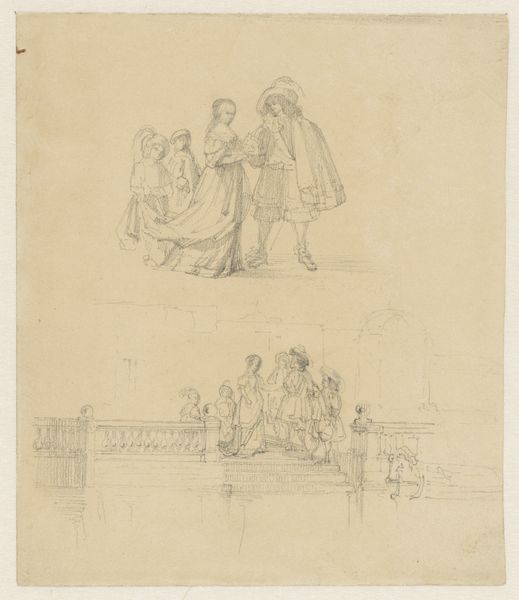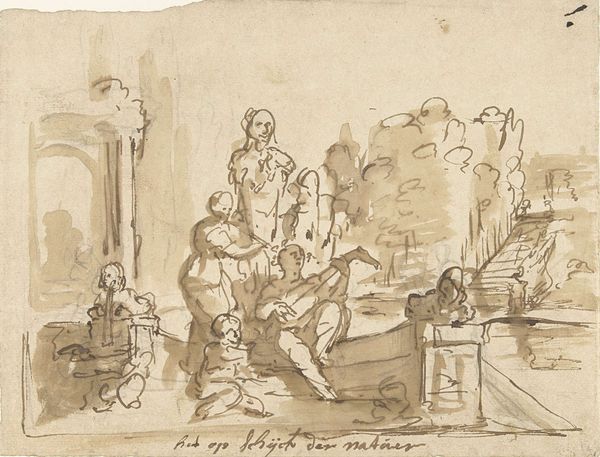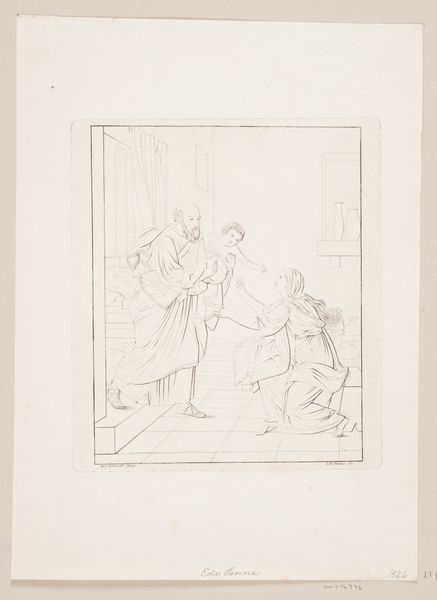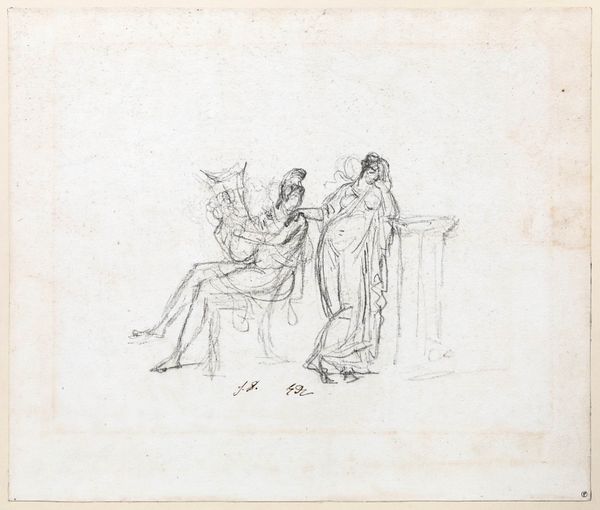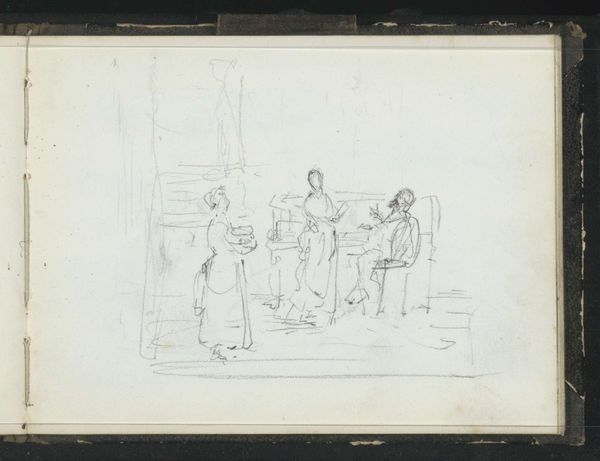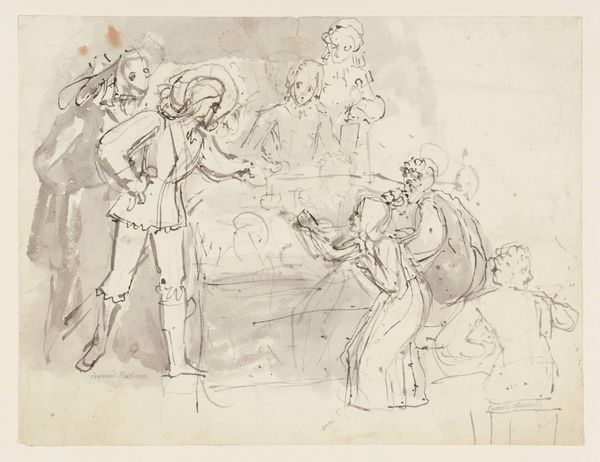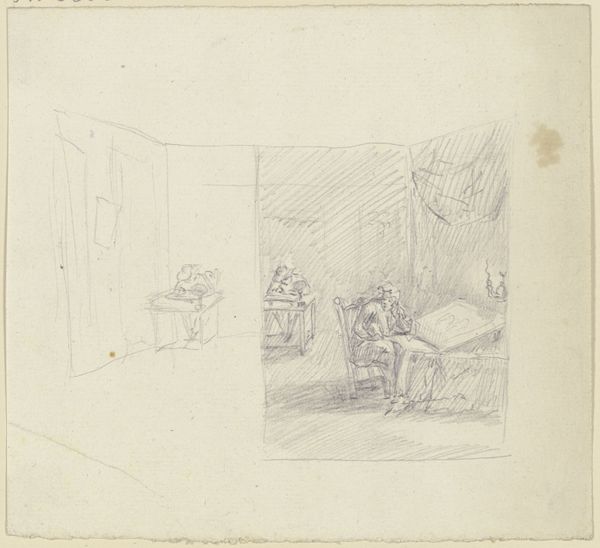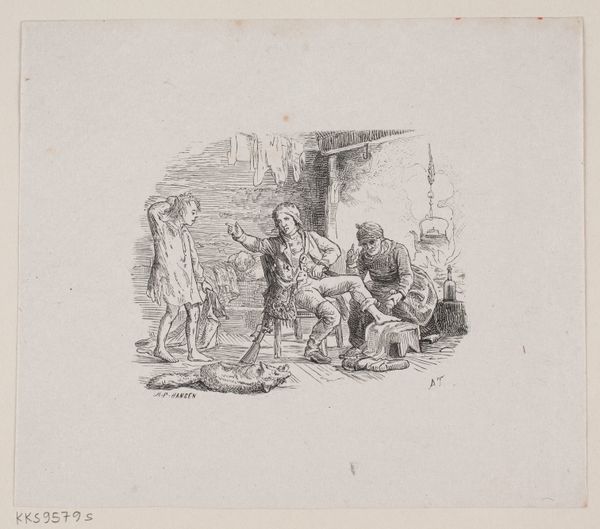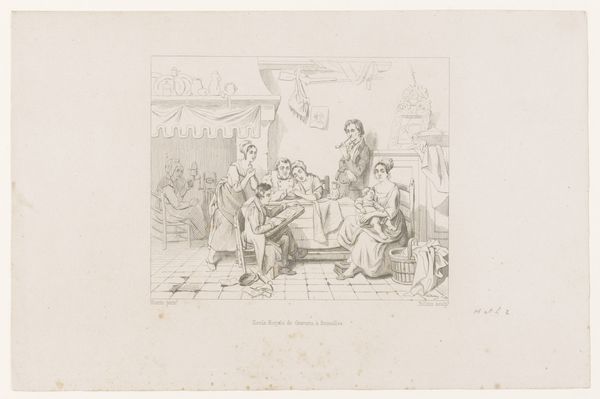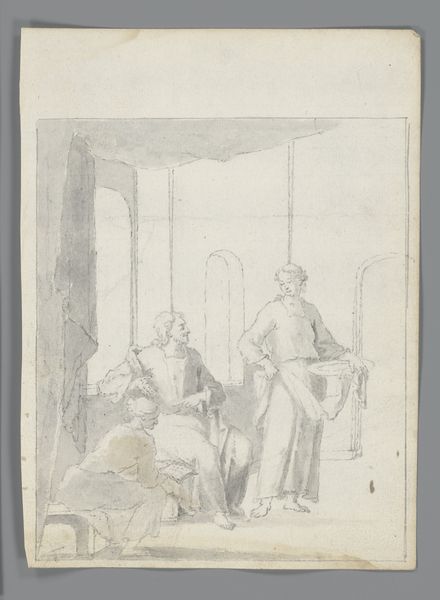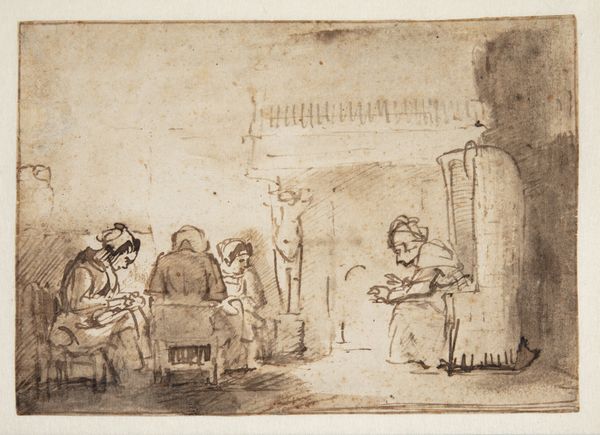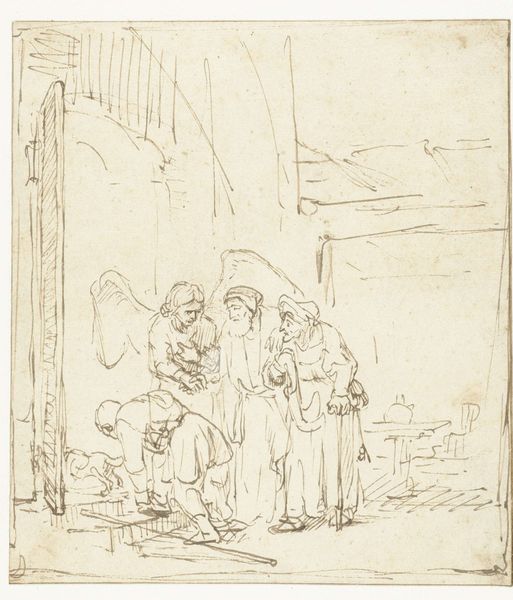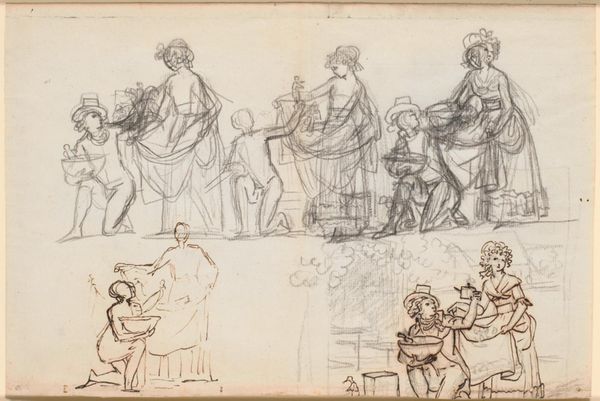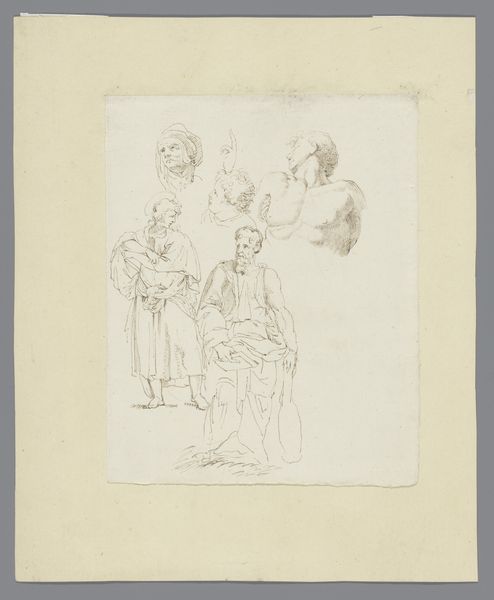
drawing, pencil
#
drawing
#
light pencil work
#
quirky sketch
#
sketch book
#
figuration
#
personal sketchbook
#
idea generation sketch
#
sketchwork
#
pencil
#
sketchbook drawing
#
genre-painting
#
storyboard and sketchbook work
#
sketchbook art
#
realism
#
initial sketch
Dimensions: sheet: 19.1 x 22.7 cm (7 1/2 x 8 15/16 in.)
Copyright: National Gallery of Art: CC0 1.0
Editor: This is a pencil drawing titled "Figures at a Church Service," by Hippolyte Bellangé. It's hard to say exactly when it's from, but the figures have such a raw, almost fleeting quality. What catches your eye? Curator: Primarily the spatial relationships and the distribution of light across the composition. Note the positioning of figures relative to the architectural elements; the pulpit, the archways. How does this arrangement affect your perception? Editor: Well, there’s a clear division. The clergy are elevated and blurred, literally and figuratively distanced from the people. Down below there are individuals etched with great sensitivity, especially the seated mother with her child, and the young boy. Curator: Precisely. Consider the handling of the pencil itself. Observe the variation in line weight; the confident strokes defining the architecture against the more tentative, feathered lines of the figures. What does this suggest to you in the hierarchy of pictorial elements? Editor: Maybe that the artist values precision and detail in the architectural construction? And the human form receives softer focus. So Bellangé is thinking carefully about texture. The light work captures forms as ideas more than finished illustrations. Curator: Yes. Think about it not as representation, but rather an exploration of form and texture through the tonal qualities of pencil on paper. Is there any symbolism suggested through forms within this structured interplay? Editor: I see. Maybe it's less about depicting a literal scene, and more about contrasting the rigid structure of the church with the vulnerable presence of the figures. Curator: Exactly! It is less concerned with narrative details, but is primarily an exercise in manipulating tone and composition. A delicate study in contrasts and visual weights. Editor: I wouldn't have thought of it that way. I was caught up in the narrative implied by the figures. Curator: It serves as a valuable reminder, then, about the richness one finds in prioritizing careful consideration of structure, medium, and spatial relationship in art!
Comments
No comments
Be the first to comment and join the conversation on the ultimate creative platform.
